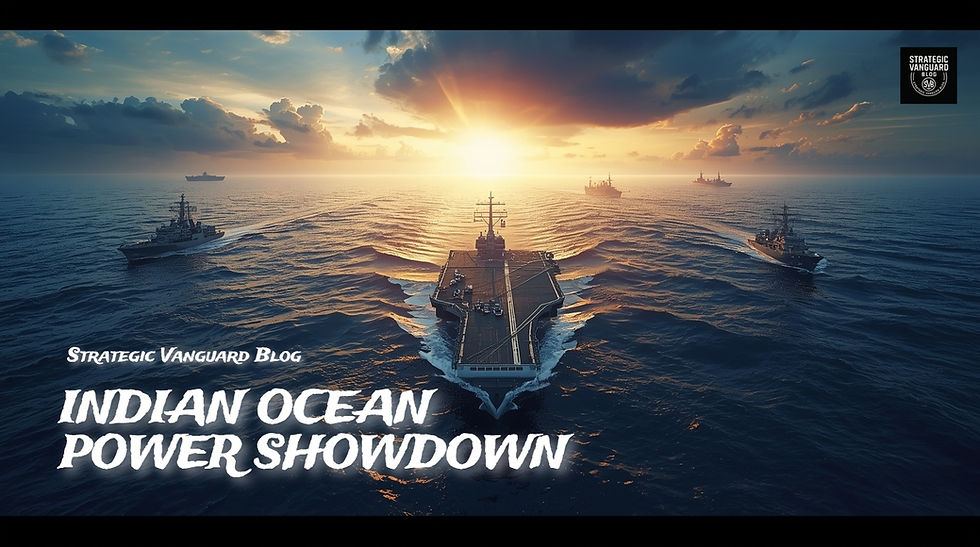BRICS+ vs The West: Can India Lead the New Global Order?
- Manoj Ambat

- Jul 3
- 3 min read
Updated: Jul 9

A Silent Revolution in Global Power
For decades, the world has operated under a Western-led order — with the U.S. dollar as the global currency, NATO as the dominant military alliance, and Western powers shaping international institutions.
But in recent years, a new axis of power has begun to rise.
BRICS+, an expanded coalition of emerging nations, is positioning itself as a counterbalance to Western hegemony. With the inclusion of Saudi Arabia, Iran, Egypt, the UAE, Ethiopia, and potentially more, this group is evolving from an economic alliance into a potential global force.
And in the center of it all stands India — a democratic powerhouse with strategic leverage in both the East and West.
🔎 What is BRICS+?
Originally formed in the 2000s, BRICS included Brazil, Russia, India, China, and South Africa. The group aimed to create a cooperative platform for emerging economies frustrated with Western-centric institutions like the IMF, World Bank, and UNSC.
But the formation of BRICS+ marks a major evolution — expanding its influence in:
Energy (Saudi Arabia, Iran)
Geopolitics (Egypt, Russia)
South-South Cooperation (Ethiopia, Brazil)
With these new members, BRICS+ now commands over 40% of the world’s population and a massive share of oil and resource reserves.
💵 De-Dollarization: Challenging the U.S. Financial Grip
One of the bloc’s boldest moves? Reducing dependency on the U.S. dollar.
After witnessing the West's use of financial sanctions and SWIFT bans — especially post the Russia-Ukraine conflict — BRICS+ countries are pushing for:
Trade in local currencies
Creation of a BRICS digital currency
Alternatives to SWIFT and Western banking systems
India has already initiated rupee-based trade with Russia and Iran, signaling its intent to play a leading role in this economic shift.
🛡️ Military & Strategic Dimensions
Though not a military alliance like NATO, there’s rising military cooperation among BRICS+ members:
China and Russia conduct joint patrols.
India has participated in multilateral BRICS drills.
Iran collaborates with Russia on naval exercises.
This growing defense dialogue raises critical questions:
Will BRICS+ evolve into a security bloc?
Can India maintain its delicate balance between BRICS and the Quad?
🇮🇳 India: The Key to a Multipolar World
India is uniquely positioned in this geopolitical puzzle:
A founding BRICS member
A core player in the Quad alliance (with the U.S., Japan, Australia)
A nuclear power with economic ambition and democratic governance
India's vision of strategic autonomy allows it to engage deeply with both BRICS+ and Western allies — but it must:
Guard against Chinese dominance within BRICS
Champion fair leadership of the Global South
Push for global governance reform in institutions where it still lacks veto power
📈 What Comes Next?
The future of BRICS+ depends on cohesion, shared vision, and the ability to resist being hijacked by individual hegemonies — particularly China.
India must steer this movement toward a genuine multipolar world where:
Global South voices are empowered
Economic structures are more equitable
Military alliances do not provoke another Cold War
🎥 Watch the Full Deep-Dive Episode
👉 Catch our full breakdown on YouTube & Rumble:“BRICS+ vs The West: Can India Lead the New Global Order?” https://youtu.be/P_sfleafQ2M
Join the Conversation
Do you believe BRICS+ can truly challenge the West?What role should India play in shaping this new order?
Comment below or join the discussion on our YouTube channel and X (Twitter).
🔖 Tags:
BRICS, India Geopolitics, New World Order, BRICS Plus, Strategic Autonomy, China vs West,
De-Dollarization, Multipolar World, NATO, Global South, US-China Rivalry



Comments